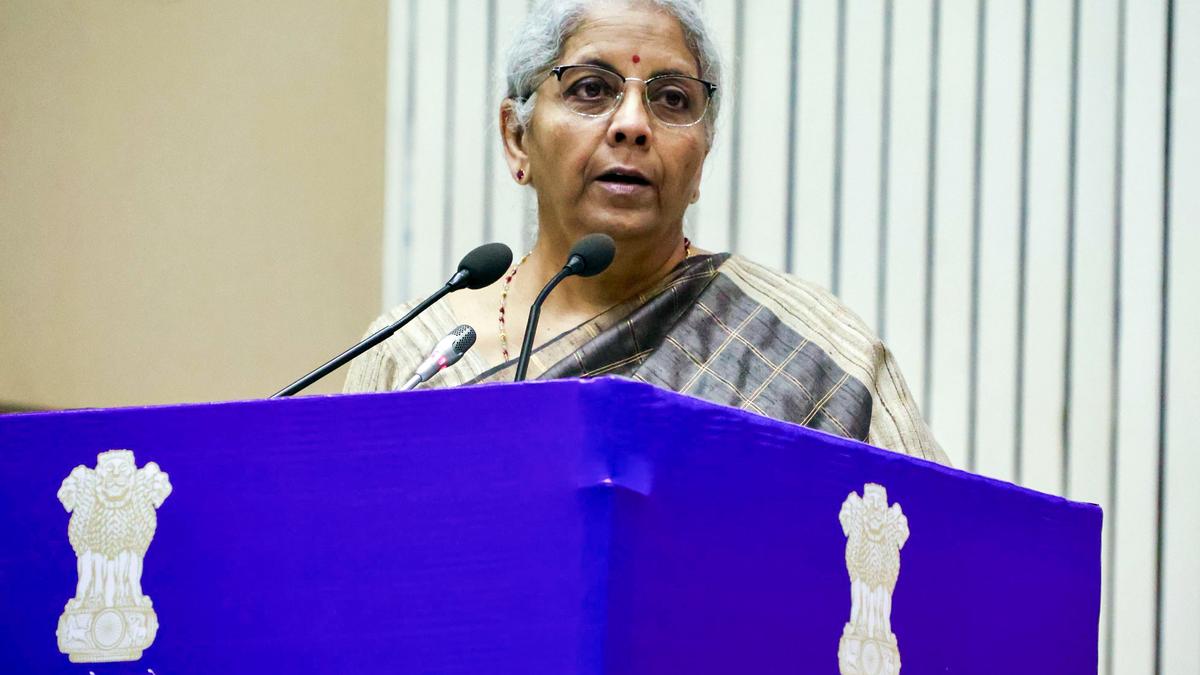First announced by Finance Minister Nirmala Sitharaman in the interim Budget in February 2024, the government apportioned a part of the fund to the Department of Science and Technology (DST). File
| Photo Credit: ANI
The government is close to finalising an ambitious ₹1 lakh crore fund to stimulate private sector investment in core research and development.
While there have been schemes before to galvanise research and development, the unique attribute of this scheme is that funds — primarily in the form of low-interest, long term loans — will be available to private companies to develop novel products and new intellectual property.

These funds cannot be availed by universities or academic institutes but they may be co-opted by a private company towards developing technology, Ajay Sood, Principal Scientific Adviser, Government of India, told The Hindu in an exclusive interaction. “You could understand it as a sort of huge PLI (Production Linked Incentive) scheme for research and development.”
A major weakness of India’s investment in research and development, experts have pointed out since long, is that the share of investment in R&D as a percentage of GDP is less than 1% (0.65) whereas scientifically advanced countries spend between 1.5%-3% on the same. In this, the private sector investment in overall R&D spend has remained 30%-36% in India whereas countries such as the United States, China see private sector contribute 75% and 77% respectively.
First announced by Finance Minister Nirmala Sitharaman in the interim Budget in February 2024, the government apportioned a part of it — ₹20,000 crore — to the Department of Science and Technology (DST). Dr. Sood said that a Cabinet note detailing the contours of the scheme, focus areas of technology was being prepared and “will be available very soon.”

He said that while the money was for now with the DST, it was the newly created Anusandhan National Research Foundation (ANRF) that would likely be involved in administering the fund. “The loans will almost be 0% interest, essentially a huge PLI scheme. This intent (to bolster private sector R&D) was never there earlier,” Dr. Sood underlined.
Commercial product
He emphasised that the loan could be availed only if the private sector company (or a consortia) made a compelling case that the research would result in a commercial product. “Otherwise why would industry do it? They are taking a loan, not a grant,” he averred. “This will not be for blue-sky research.”
Tenures for the loan could range from 5-7 years and proposals would be evaluated by a professional body and not the DST. “Be it space, pharmaceuticals, auto, energy. We are sector agnostic. There are some broad areas but they cover nearly every area (of science and technology). However if it is a service industry (like information technology) they won’t make the cut. IT does not need such support,” Dr. Sood opined.

The ANRF was conceived as a funding body, on the lines of the American National Research Foundation (NRF), to galvanise science and engineering research in the country. It was conceived as a step-up over existing funding arrangements and meant to encourage research funding to State universities, and to have private industry participate more actively in funding basic research and development.
The ANRF aims to establish a ₹50,000-crore corpus with ₹36,000 crore of it coming in from non-government sources. While currently headed by the Secretary of the DST, it is expected to have its first full-time CEO — most likely a technologist from the private sector — take over from the next financial year.
Published – March 06, 2025 09:43 pm IST
